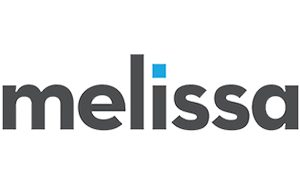The rise of agile and mobile has fueled digital transformation across every industry, which has given rise to internal efficiency-focused initiatives like DevOps. With the prominence of mobile-first strategies within digital businesses, the speed and complexity of mobile create challenges for organizations looking to secure the data handled by mobile apps. If you are on the journey to secure DevOps for your mobile apps, this ebook is for you.
Noted SQL Server MVP and founding editor of SSWUG.org Stephen Wynkoop addresses the challenges of achieving quality data, the negative effects of poor data quality on your business, and the importance of the single customer view (SCV) to an effective data quality regimen. Wynkoop explores different data quality implementations in SQL Server, citing Melissa’s unique survivorship approach. Learn more.
One of the challenges teams face when transitioning to continuous testing within DevOps is the oversimplification found in many models. These often underestimate the effort and time required. For new projects and small teams, you can begin with a pure agile approach, utilize the best new tools, and glory in the lack of technical and process debt.
Among the tips you’ll learn about in this whitepaper are:
- Create a pipeline blueprint
- Leverage the cloud
- Start small, but start now
- Embrace automation
Download this whitepaper to get more details about creating a test automation strategy.
Organizations – and developers – need to innovate to stay competitive, and with release schedules shrinking all the time, it’s more likely that a business-threatening bug might slip through to production.
Successfully implementing CT, which aims to avoid business-killing software failures, depends on continuous alignment between people, processes, and technology in the organization. Each of these three are essential elements to a properly functioning CT organization.
Download this whitepaper to learn more about these elements, as well as how to develop a five-step plan for building your CT foundation.
Today’s applications are architectured to work on hybrid, componentized, containerized, distributed, mobile/sensor environments, and so do the networks that sustain all these applications together. Complexity, traffic volume, intolerance to performance degradation and inefficiency will only increase, demanding real-time and holistic monitoring.
There are several sources of instrumentation for network monitoring data such as: Endpoints metrics, events, logging, sensor data, traffic flow analysis, packet inspection, and synthetic tests. However, often information is collected and visualized in silos, consuming IT resources without providing a complete view of the overall application environment health, all while leaving gaps that can lead to flaws and oversights when assessing network and resource utilization.
Download this whitepaper to learn how A platform to which all monitoring data can converge for storage, alerting and processing is how monitoring should be approached strategically.
RECORDED EVENT: We are always looking for ways to make our solutions work better and smarter. We accomplish this by tracking the performance of each of the components underlying our solution. All this critical performance data has a time stamp and a value — also known as time series data. If this important time-stamped data is at the heart of initiatives to keep things performant, why are we entrusting this data to an ordinary relational database?
Time series data has historically been associated with applications in finance. However, as developers and businesses move to instrument more of their servers, applications, network infrastructure and the physical world, time series is becoming the de facto standard for how to think about storing, retrieving, and mining this data for real-time and historical insight.
This paper will:
- Define what time series data is (and what it isn’t)
- Explain how the time series data domain differs from more traditional data workloads like OLTP or full-text search
- Examine what makes the InfluxData platform different from other proposed solutions
Download this whitepaper today to learn more!
Calendar help us keep track of our lives, and integrating these calendars into the software tools businesses and consumers use has become mission-critical for many software companies. But building those integrations is a complex process.
We created this guide to help make your calendar integration process easy. In this guide, you will learn:
- The deceptively complex world of calendar events and RRULEs.
- How to build timezone-proof integrations across calendar providers
- How to use the Nylas Calendar API to quickly and easily connect to all calendar providers
Read this informative whitepaper to learn more!
With workers reluctant to leave their favored tools to do other tasks, SaaS providers are creating APIs to deliver such things as email, workflow automation, and more into those tools of choice.. But building these features into your application is complex and time-consuming. This guide is designed to help organizations see the differences between building their own integrations or utilizing APIs to existing integrations, to better inform their decisions.
RECORDED EVENT: Value Stream Management (VSM) is one of the hottest emerging topics in the world of software delivery. But breakthrough the buzzword static and it may also be the most misunderstood idea today — at least in terms of its strategic importance to the enterprise as we step fully into a software-driven world. For enterprise leaders, however, the stakes are enormous and it is essential that they get VSM right.
Recorded Event: Welcome to 2019! Does the clean slate of a new year have you motivated to make positive changes, or do you find setting resolutions to be a daunting task? We’ve put together a handy guide to help you set — and stick to — one important resolution: Quit testing bad habits! Join this webinar for practical advice that will help you define and stick to a better testing strategy in 2019, including:
- Stop wasting time: Reduce test maintenance and stop spending time on false positives
- Get organized: How to centralize test management and orchestrate test execution across frameworks and tools
- Get along better with others: Enhance developer-tester collaboration with the right integrations and processes
- Make smarter decisions: The reporting tools and techniques that will help you gain insights and improve application quality
- And more ways to develop innovative testing strategies and work more efficiently
Recorded Event: Redis is the perfect fit for microservices, distributed and cloud-agnostic applications in a containerized world. In today’s consumer-driven world, application performance is increasingly important. Redis, the open-source NoSQL database, is known for its linear scalability in performance; recent benchmarks show up to 50 million ops/sec. Redis Enterprise makes Redis highly available, multi-model (like search and graph) and makes scaling in the cloud, on-premises or in Kubernetes, seamless while reducing your TCO.
« Previous Page —
Next Page »












